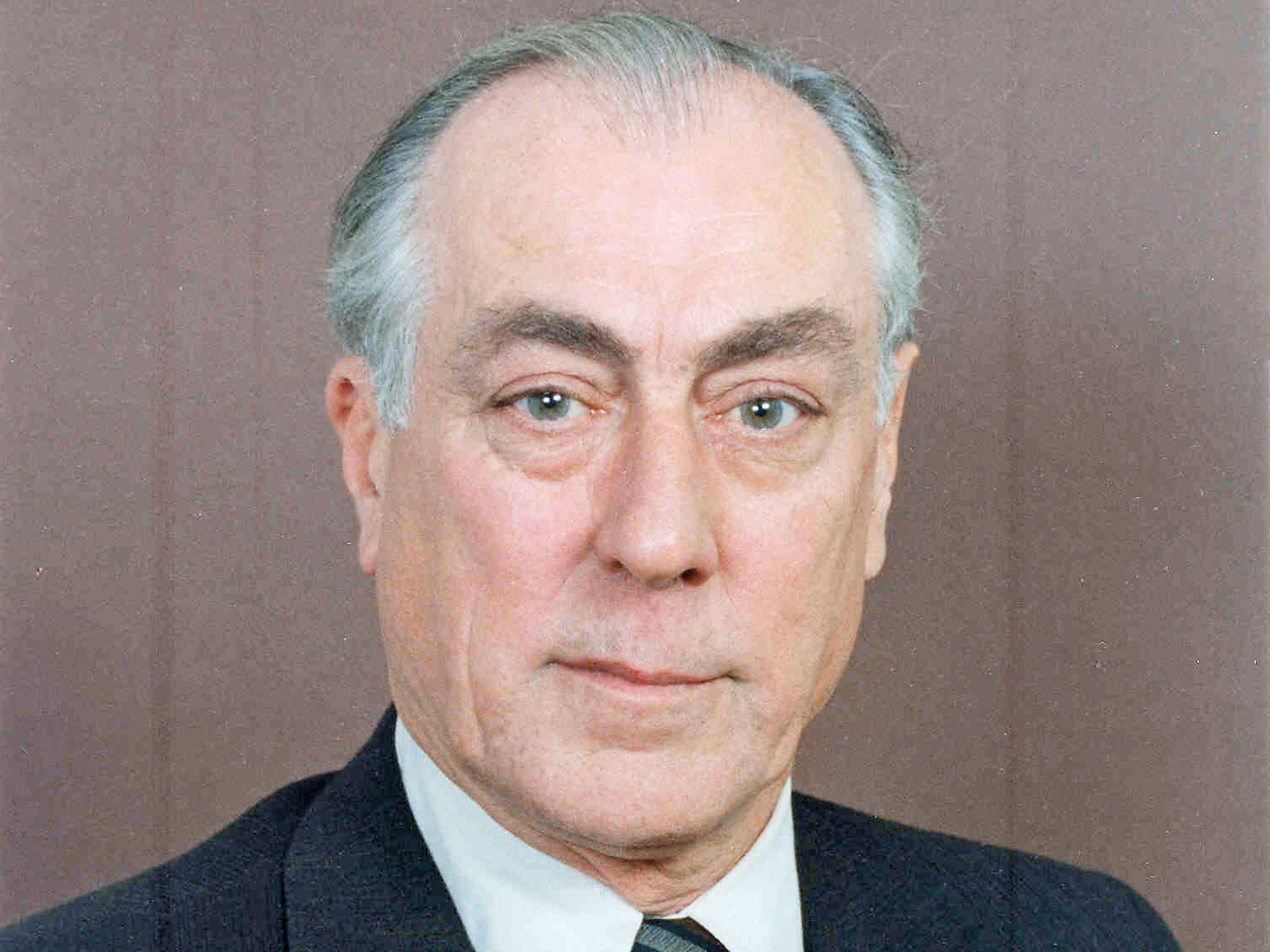Sir Peter Marychurch, obituary: GCHQ director at the height of the Cold War
Marychurch led the intelligence-gathering agency from 1983 to 1989, an era of considerable turbulence for the espionage community leading up to the fall of the Berlin Wall

Simply put, Sir Peter Marychurch was one of Britain's most senior and influential “spooks” during the latter years of the Cold War. From 1983-89, he was director of the Government Communications Headquarters (GCHQ) at Cheltenham, retiring with great satisfaction after the fall of the Berlin Wall. He was never the classic spy in the shadows; his forte was acutely sensitive “signals intelligence”, the monitoring, interception and interpretation of military radio, radar and satellite signals, in his era mainly from the Soviet bloc.
During his tenure as head of GCHQ, he battled three major issues. The organisation had been forced from the shadows by embarrassing media leaks; Prime Minister Margaret Thatcher had imposed a controversial ban on trade unions at the GCHQ; and the damage from the notorious Geoffrey Prime spying and child sexual abuse case was still haunting the corridors of Cheltenham.
Earlier in his career, on secondment from GCHQ, he also worked within the US National Security Agency (NSA), liaising between the two sides of the transatlantic “special relationship”. For the rest of his life he remained a staunch believer in US-UK intelligence sharing. He also had a spell as senior GCHQ officer in Melbourne, assisting Australian intelligence as part of the so-called Five Eyes alliance linking Britain, the US, Australia, New Zealand and Canada.
In Scotland, Sir Peter was best-known as the catalyst for a dramatic Special Branch police raid on the BBC’s Glasgow offices in January 1987, along with raids on the homes of Scottish investigative journalist Duncan Campbell and his research team. They had been working on a six-part BBC series title Secret Society, exposing alleged irregularities in the UK government and intelligence agencies. The government cited potential “breaches of the Official Secret Act” but critics, including Scottish Labour MP Tam Dalyell, billed the police raids as “an illegal act”. The raids became known as the Zircon Affair, since Mr Campbell had revealed plans for a top-secret Zircon signals intelligence satellite – plans later dropped due to costs.
The son of bank clerk Eric Marychurch and his wife Dorothy, Peter Harvey Marychurch was born in 1927 and attended what was then known as the Lower School of Sir John Lyon in Harrow, Middlesex. He enlisted in RAF on VJ Day – 15 August 1945. Posted to an RAF station at Stow-cum-Quay, Cambridgeshire, he travelled into Cambridge every day to study military Russian from Soviet exiles. In 1948 he was hired by GCHQ, at the time in Eastcote, Greater London, which had been an outstation of the Bletchley Park code breakers during the war.
In 1953, Marychurch was seconded to the US National Security Agency (NSA) in Washington, where he worked with the legendary American cryptologist Ann Caracristi on secret Soviet communications. During that posting, he toured the US by car and also visited pre-Castro Cuba before returning to GCHQ in England. He also had a spell at RAF Pergamos in Cyprus (1958-60), again monitoring Soviet activity.
During most of Sir Peter's career, the GCHQ had remained a top-secret organisation even though its cover had first been blown in 1976 by the London magazine Time Out. That article, co-written by Duncan Campbell, shocked even the spouses of GCHQ staff who had no idea what kind of work their husbands or wives were going to when they left after breakfast. In 2003, however, the GCHQ “came out” in a big way by moving to the now-famous “doughnut” building outside Cheltenham, now with a staff of more than 6,000.
After his 1989 retirement, Sir Peter indulged his passion for music, becoming chairman of the Associated Board of the Royal Schools of Music and Chairman of the Cheltenham Music Festival. He was knighted in 1985 and is survived by his wife June.
In his best-selling 1987 book Spycatcher, former MI5 agent Peter Wright revealed how Mr Marychurch had helped him work on interpreting Soviet broadcasts from Moscow to agents in the West. “A young GCHQ cryptanalyst named Peter Marychurch transformed my laborious handwritten classifications by processing the thousands of broadcasts on computer and applying 'cluster analysis' to isolate similarities in the traffic, which made the classifications infinitely more precise. Within a few years, this work had become one of the most important tools in Western counterespionage.”
Sir Peter Marychurch, born 13 June 1927, died 21 May 2017
Join our commenting forum
Join thought-provoking conversations, follow other Independent readers and see their replies
Comments